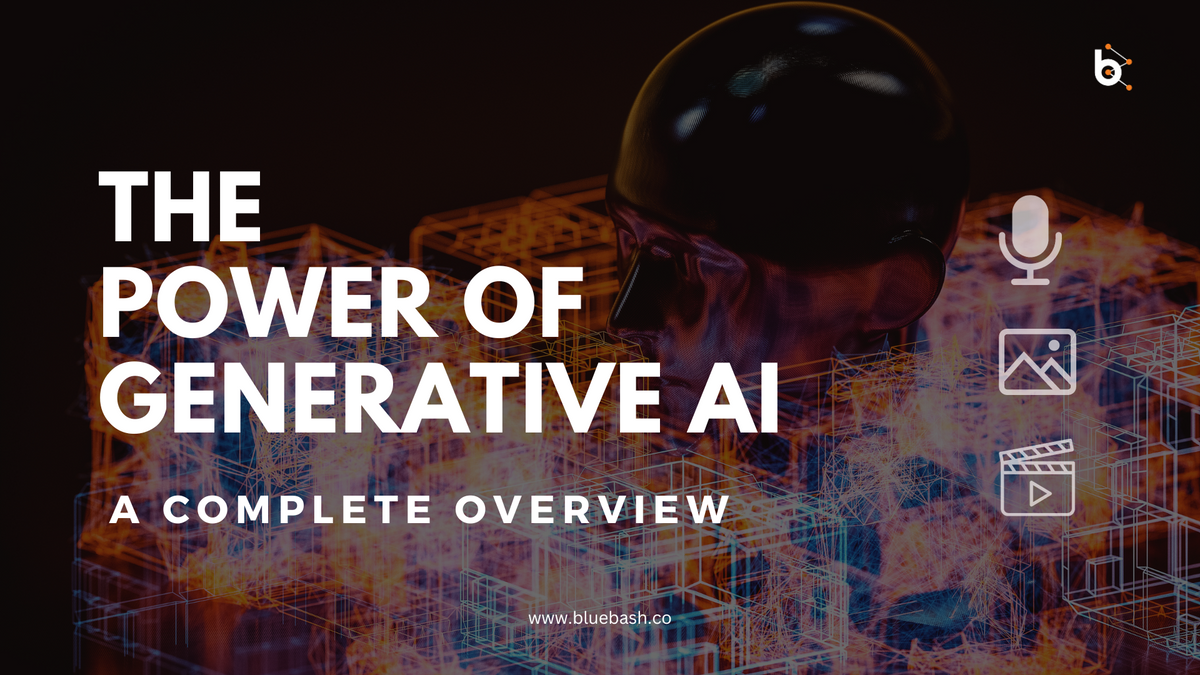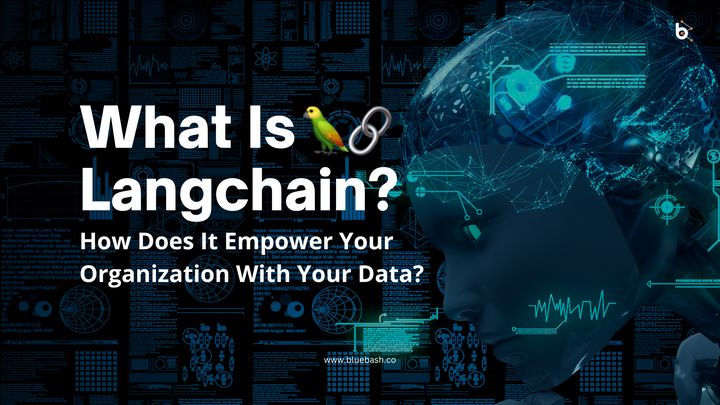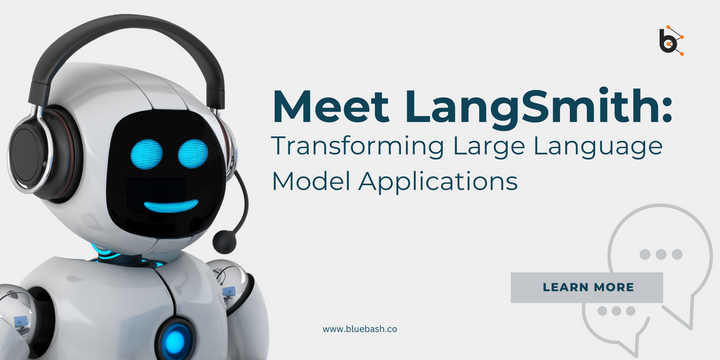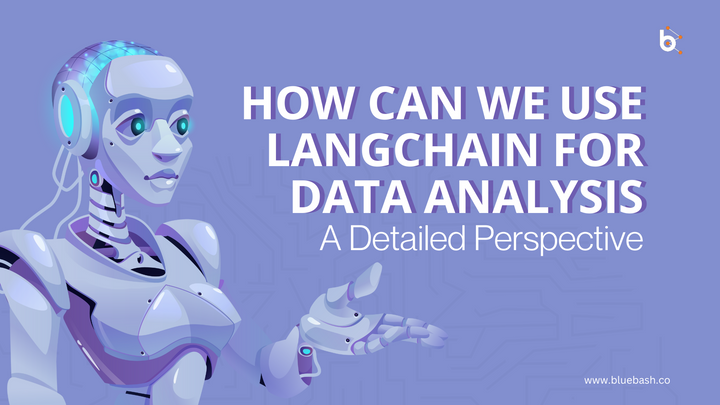The Power of Generative AI: A Complete Overview

Generative AI, short for Generative Artificial Intelligence, is a category of artificial intelligence that focuses on creating content or data that is original and unique rather than processing or analyzing existing information. Generative AI models have the ability to generate content, such as text, images, videos, and more, that can closely resemble human-generated content.
Different applications like the Generative AI model GPT (Generative Pre-trained Transformer), LaMDA (Language Model for Dialogue Applications), and various others, are built upon advanced neural network architectures. It includes transformers and generative adversarial networks (GANs). These models are trained on massive datasets containing a wide range of human-created content, which enables them to learn patterns, styles, and structures inherent in various types of data.
Types of Generative AI Models
Let’s break down the different types of Generative terms into simpler terms:
Text-to-Text Models: These models have the remarkable ability to generate text when provided with text input. For an Example- ChatGPT 3.5 , Google’s BARD.
Text-to-Image Models: They generate images based on textual descriptions and promote creativity and visualization. Midjourney, Ideogram.AI
Text-to-Video and Text-to-3D Models: These models can change text into videos or three-dimensional objects for immersive experiences.
Text-to-Task Models: Text-to-Task models are your reliable helpers in getting things done. Text-to-task models perform actions based on text input. Whether it's regarding remembering your tasks or booking a flight ticket, these models turn text into practical solutions, making tasks easier and more efficient.
Example- Custom AI models

Foundation Models in Generative AI
Foundation models are a form of Generative Artificial Intelligence, that serve as the foundation for various natural language processing (NLP) and computer vision tasks. These large AI models are pre-trained on extensive and diverse datasets which makes them capable of understanding and generating human-like text. It makes them adaptable to various downstream tasks. They have the power to transform various sectors including healthcare, finance, and customer service.
Key characteristics and capabilities of Generative AI include:
Contextual Understanding:
Some smart generative AI models, especially those using transformer technology, are really good at understanding what’s going on around them. They consider the context of preceding data to generate coherent and contextually relevant content.
Adaptability:
These Generative AI models can be customized to do specific jobs, allowing them to generate content tailored to particular needs. For instance, they can generate marketing copy, product descriptions, or technical documentation that are just right for what you need. It's kind of like having a super-smart assistant.
Creative Applications:
Generative AI has creative applications, such as concept art, storyboarding, and content creation. It can assist in making valuable AI applications for artists, designers, and writers in their creative processes.
Automation
Generative AI can automate repetitive tasks, such as content generation, image editing, and even some aspects of software development, enhancing efficiency and productivity.
Human-AI Collaboration
Generative AI is often used in collaboration with humans, helping them brainstorm ideas, visualize concepts, and streamline various creative and operational tasks.
Customer Service
Chatbots powered by generative AI enhance customer service by providing meaningful and context-aware responses to user inquiries, improving engagement and support.
Concept Art and Idea Sharing
Generative AI enhances collaboration with traditional designers and illustrators by providing visual references and streamlining communication. It facilitates the creation of storyboards, simplifying video production and planning.
Revolutionizing Customer Service
Generative AI has transformed customer service. Integrating advanced language models into chatbots enables them to provide meaningful interactions, answer questions, retrieve data, and offer guidance. This technology enhances user engagement and provides a competitive advantage.
Empowering Software Development
GitHub Copilot, developed in collaboration with OpenAI, assists developers by providing code suggestions based on project context and conventions. This AI-powered tool significantly improves developer productivity and fosters creative problem-solving, a vital asset in today's complex software landscape.
Optimizing Operational Tasks
Generative AI automates various operational tasks, from summarizing documents to generating prompts for presentations. It assists in generating ideas for marketing campaigns, recommends content strategies, edits text, and enhances HR operations, such as candidate assessments and onboarding.
Content Generation
AI can craft social media messages, sales copy, promotional text, and more. Tools like copy.ai and Postello generate engaging content for platforms like LinkedIn, Instagram, and YouTube. Additionally, ChatGPT can generate articles, product descriptions, and tailored content, allowing users to specify tone and target audience.
Image Creation and Editing
AI tools like Jasper Art and Midjourney assist in generating images and editing them to suit specific requirements. This streamlines visual content creation, making it accessible to small businesses and reducing the need for professional designers.

Generative Adversarial Networks (GANs): A Zero-Sum Game
Generative AI models often operate using Generative Adversarial Networks, or GANs. This sophisticated approach involves two neural networks engaged in a zero-sum game:
Generator: One of the neural networks, known as the generator, is trained to create realistic input, such as images or text, that mimics human-generated content. It generates data based on patterns it has learned from training data.
Discriminator: The other network, referred to as the discriminator, is responsible for distinguishing between real and generated input. It must identify whether the input it receives is fake or originates from the training dataset.
The success of a GANs model hinges on the generator's ability to create synthetic input that can convincingly fool the discriminator. This approach has been remarkably successful in producing photorealistic images, as demonstrated by models like Midjourney and Jasper Art.
Transformers: Contextual Understanding and Prediction
Transformers represent another fundamental paradigm in generative AI. These models analyze the context surrounding items, such as words in a sentence, and predict the next item or word in a sequence. They leverage an attention mechanism that allows them to detect intricate connections and dependencies between data elements, making them versatile and powerful.
Real-World Applications
Generative AI's impact extends across diverse domains:
Healthcare: From medical image synthesis to drug discovery, Generative AI in healthcare revolutionizes research and patient care.
E-commerce: In the world of online shopping, Generative AI boosts customer experiences and offers valuable product recommendations.
Finance: It aids in fraud detection, risk assessment, and personalized financial advice, enhancing financial services.
Customer Service: Chatbots and virtual assistants powered by Generative AI deliver superior customer support and personalized interactions.
Content Creation: Generative AI is used in content generation, automating tasks like writing, design, and video production and many more.
Generative AI Tools and Platforms
Many tools and platforms have come up to make it easier to create Generative AI development and deployment:
Generative AI Studio: This platform streamlines the creation and deployment of Generative AI models, offering pre-trained models, fine-tuning capabilities, and deployment options.
Generative AI App Builder: This user-friendly tool enables the creation of Gen AI applications without coding, making it accessible to a broader audience.
PaLM API: PaLM API provides developers access to Google's large language models and Gen AI tools, allowing for experimentation and testing.
Adopting Generative AI in Business
To leverage generative AI effectively, businesses should:
Analyze Impact: Evaluate how generative AI can disrupt their industry and provide value.
Develop AI Policies: Create clear policies on when and how generative AI should be used within the organization. Integrate AI into the company's culture and values.
Foster Trust: Communicate AI usage to stakeholders and customers, emphasizing the role of human oversight and transparency.
Conclusion:
Generative AI is a game-changer in the world of artificial intelligence. Models like ChatGPT, LaMDA, Midjourney, and DALL-E shows can create all sorts of content like text, images, and videos that look like they were made by humans. Businesses across diverse industries like Healthcare, Education and research, finance, customer service, E-commerce etc. are already harnessing the power of Generative AI.
Generative AI is creative, it can automate tasks, and it's great at working with people. It's already making a big impact in industries and can help businesses in many ways.
However, the adoption of generative AI is not without its challenges, including concerns related to intellectual property and the need for human oversight to ensure accuracy and reliability. But, as we use Generative AI, we need to make sure we use it responsibly and make it transparent when we're using it. So, Generative AI is changing the game and helping us do things in new and exciting ways. As generative AI continues to evolve and mature, it promises to reshape industries, promote innovation, and unlock new possibilities for businesses worldwide.



